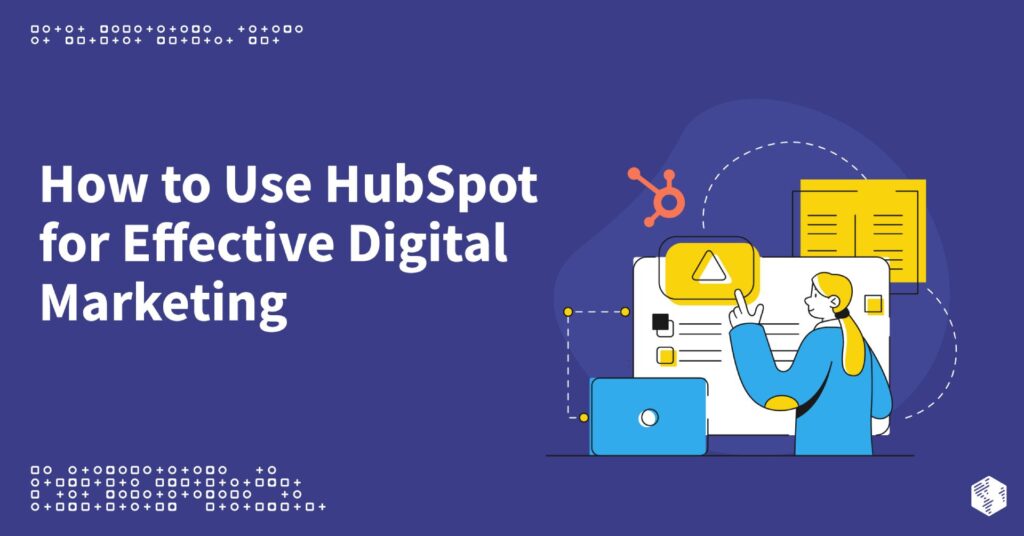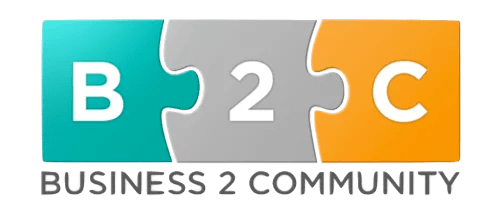While topic hubs, also known as content clusters, have been around since SEO content marketing began, they’ve since become one of the most important yet underutilized strategies in the world of B2B marketing.
Want to establish your brand as an authority in your industry and set yourself apart from competitors? Topic hubs can be the key.
Here we’ll cover how to take advantage of topic hubs by going over the specific nature, purpose, and setup for these invaluable marketing assets.
What Exactly is a Topic Hub, and Why is It Better Than a Simple Pillar Page?
A topic hub serves as a single resource page that goes in-depth about a specific topic to give users and prospective customers or clients everything they want. The main hub is then supported by a set of subpages that cover specific subtopics branching out from the topic hub.
There are many reasons why one would want to use one or more topic hubs, including:
Breaking Up Content
Rather than having a single page that exhaustively covers a topic to the point of seeming redundant or boring readers, a topic hub with subpages can help divide content up into multiple effective pieces that allow readers to learn more at their own pace.
Avoiding Keyword Cannibalization
If there are too many pages built around a topic with similar keywords using the same terms, this could lead to cannibalization, in which your pages compete with each other in search engine rankings.
Establishing Your Company as an Authority
If you extensively cover a certain topic that other brands aren’t focusing as much on, with a plethora of inbound links and social media mentions, you will be able to flourish as a thought leader and industry authority over your competitors.
Giving Users What They Want
An effective topic hub will be able to form a great user experience for anyone seeking more information about a given topic and help give them all of the information they need to meet their objectives. People are also much more likely to return to your site for additional information when they need it.
Developing a Strong SEO Presence
From an inbound marketing perspective, through the use of an effective internal linking strategy, businesses can also increase the authority of the main hub page for a variety of competitive keywords and increase rankings for a wide range of terms that people are searching.
This means it will be integral when developing an effective SEO marketing strategy.
Build an Umbrella for a Broad Topic
Topic hubs come in handy if you want to target a topic that is particularly broad and difficult to rank for with a single page. By creating a topic hub with subpages discussing different subtopics, you can cover an entire set of keywords based around that central topic.
Consider a topic like “content marketing.” You’ll typically never be able to rank for that keyword alone with a single page, in part because you’ll never be able to discuss everything about that topic on one page. Having other pages about different topics relating to content marketing, and linking back to that main hub, can enable that hub to rank higher for those broader terms.
How Do Topic Hubs Work in Relation to Web Content?
If you have a ton of content covering a broader topic, making a topic hub is one of the easiest ways to give the user all of the information they want without the need for a lengthy page that eventually loses readers’ interests.
A topic hub is essentially a collection of content pieces that each share a common category or theme. Links appearing on that main page using keywords you want other subpages to rank for will help further develop a strong topic hub.
Think of Content Topic Hubs as Resource Pages
Topic hubs are different from other types of pages or blog posts. Topic hubs are ultimately considered to be resource pages that should appear as such on your website, setting them apart from other types of content.
Subsequently, all subpages within that topic hub will then support that topic hub as other resource pages.
Better Yet, Think of Them as Trees
Similar to a tree, a topic hub and its subpages will function as a strong, branching foundation built around a certain topic.
The main topic hub is your trunk, and all of the subpages are branches that help support that trunk. The more branches you have, the taller the trunk gets, and eventually, you’ll have the biggest “tree” in your industry.
Over time, you can build an entire forest with a multitude of topic hubs, while competitors are stuck in the bushes.
Appealing to Google Through Searcher Intent
With the introduction of the Hummingbird update and Google RankBrain, topic hubs became more important due to the focus on topics and entities for rankings, rather than simply relying on keywords.
It’s important to avoid confusing topics with keywords, however. Keywords are merely small parts of search queries, while topics put those keywords into context by developing a strong narrative around them.
This means that semantics are more important to consider based on searcher intent. In short, think about what people are looking for as opposed to the simple terms that only search engines would care about. These could be statements or questions that you can help flesh out through a topic hub and its subpages.
While keywords are still key in many ways, Google also has a better understanding of categories and topics these days, which means they are likely prioritizing them over keywords.
Performing Keyword Research for Content Topic Hubs
For the most part, SEO professionals have conducted keyword research with the goal of optimizing content on a single page or ranking for variations of a certain term. However, topic hubs have effectively changed the SEO game by allowing for optimization based on intent, serving as theme pages that guide prospects along the buyer’s journey, with content enveloping all relevant subtopics.
You can use a keyword research tool to create a list of many different keywords pertaining to your theme and prioritize them according to relevance to products or services, along with search volume.
While every page should target a set or subset of one or two main keywords, you should perform keyword research that helps address product- or service-specific entities, different types of data available to you, customer objectives, and other semantic terms that people often use in your industry.
First, start out with seed topics that aren’t too competitive, followed by developing a list of long-tail keywords. Then you can order these long-tail topics according to competition, relevance, and traffic potential, among other factors. Once you’ve established your list of prioritized categories, you can then decide on the set of pages to build and further prioritize based on predicted traffic.
Start with Internal Data to Determine Keywords Worth Targeting
It’s a good idea to begin the keyword research process by looking at your site’s internal analytics and see what content you have and how it’s performing. If you’re developing a new website, you can look at proposed future content and find commonalities between each subject.
Move on to Competitors and Audiences
Next, you’ll want to consider the search intent of your target audience, and build topic hubs based on the products and services you can offer prospects. Check competitors’ content to see what they’re doing and see if you can spot any potential niches they’re not covering, which you can.
Look Through Current Rankings
Take all of the keywords you have mapped for your pages and enter them into Google to see what’s ranking for those terms. You can then comb through these pages for relevant co-occurring phrases that you can incorporate in your content strategy.
Also, things like rich snippets, related questions, and other features on Google could further indicate what you have the potential to show up for with your hubs.
How to Determine Which Pages to Include in Content Topic Hubs
One of the best ways to start developing the actual hubs is to look at your existing data and content. You can take certain steps such as changing the structure and architecture of your website to organize it based on page clusters and themes discussing specific topics.
Content audits will help you remember why you created specific pieces and figure out how it can help convert leads. You can then decide which pieces will benefit from conversion into a hub page with additional content, or see if you can simply add it to a hub you’re already building. If you find that the content is irrelevant or useless in meeting your goals, simply get rid of it.
Answer the Questions Your Audience is Asking
By looking at competitors, industry media, other informational websites, or other sources, you can find questions that your audience frequently asks, and build content that provides your own in-depth answers.
Also, consider the problems that your audience faces, and inform them in your hubs how your products or services can help them. This can get them started on that buyer’s journey that will ultimately lead to a sale.
Even just using Google’s auto-suggest feature can give you plenty of ideas for potential topics and subtopics. Take our previous example of “content marketing”:
Consider the Various SEO Elements That Go Into Each Page
After gathering all of your topics and keywords, which should be efficiently organized at this point, it’s time to focus on the different SEO aspects that all of your pages will use.
Technical SEO is necessary to implement, as it’s how Google crawls, indexes, and—in part—ranks your content. All of the updates that have gone into Google’s algorithm over the years has made elements such as content, meta content, and HTML code vital to your content’s performance in SERPs.
On the other hand, despite all of the talk about length, structure, headings, links, and so on, it’s been largely established that, today, high-quality content is the biggest factor in getting the best results.
The Art of Internal Linking
Implementing the right internal linking strategy across all of your topic hubs and subpages will serve as the “roots” that support your topic hub tree.
You’ll want to determine the best anchor text to use for each link, as they will include the specific short-tail or long-tail keywords that you want that linked page to rank for in the end.
Make sure your topic hub has sufficient high-quality links with relevant anchor text leading to those subpages, and ensure that your subpages are doing the same for your main hub. This will keep all of your pages connected, leading readers to your subpages or main topic hub, while giving Google more incentive to rank pages for specific relevant terms.
Be On Your Way to Developing B2B Topic Hubs That Get Results
Taking all of these into consideration when developing your online marketing campaign, you can create topic hubs that effectively trump all other resources out there in your niche, while helping encourage readers to become customers. In addition to other types of content, these resource pages will reinforce the rest of your website while further proving that you’re the go-to source for information in your industry.
If you would like to benefit from some of the best Chicago SEO content marketing services that incorporate topic hubs in content to improve performance for both the user and Google, turn to OneIMS today and speak with a strategist to get started.
































